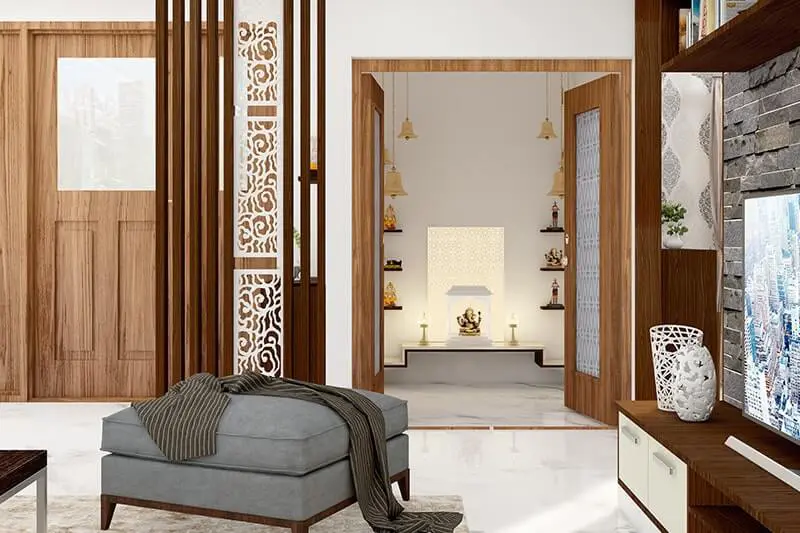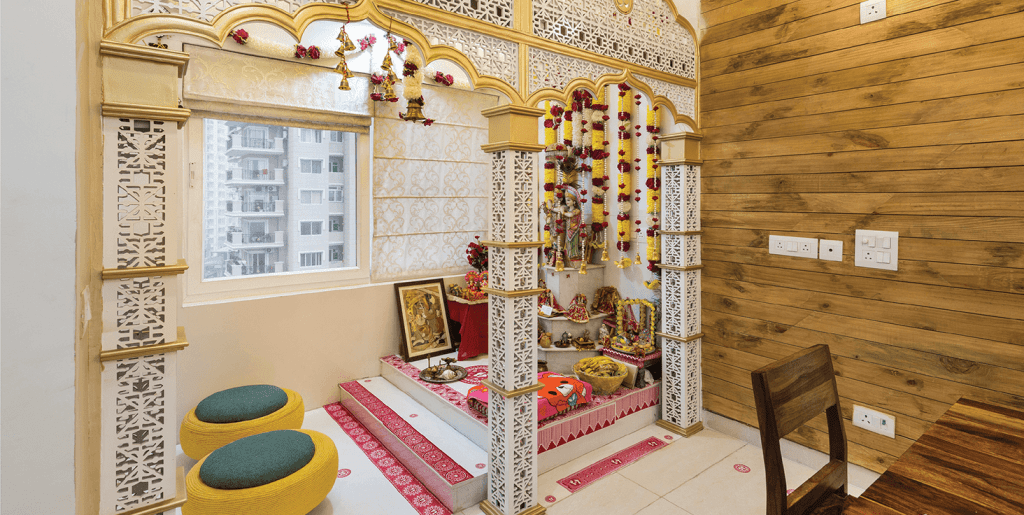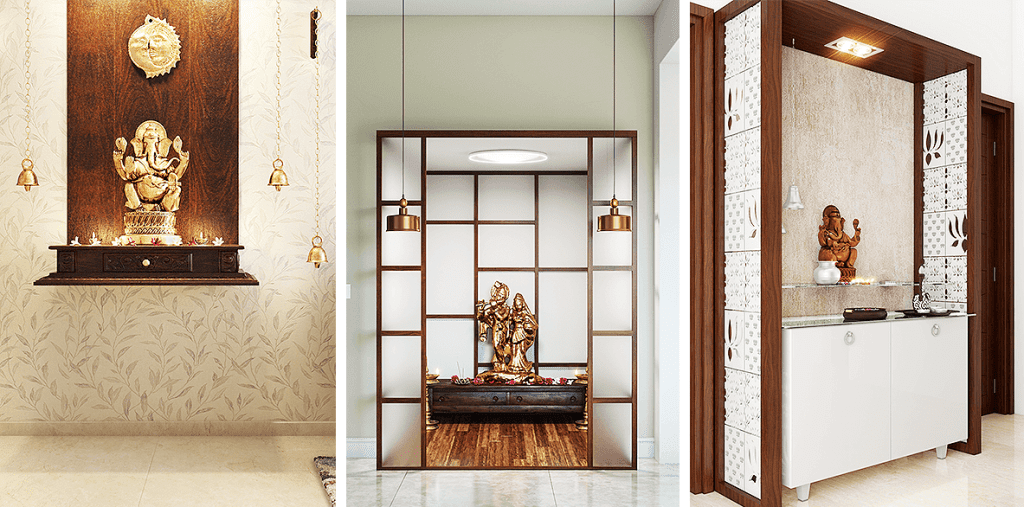A pooja room is a sacred place where we worship God. So, it should be a positive and peaceful place. This sacred room is not only a part of your home, but it also spreads positive energy.
When building an auspicious space like a pooja room, there are certain guidelines that must be followed such as the location and other details. Here are a few tips for designing a pooja room in your home.
Things to take care of for Designing Pooja Room
1. Finalizing Location of Pooja Room
Although according to Vastu, the north-eastern, eastern, or northern corners of the house are ideal for worship, it is difficult to follow in small houses or flats, especially in big cities. Nowadays people build the pooja room as per the space available. Still, if possible, remember to avoid building it in the southern direction since it is considered inauspicious.

Also, it is necessary to avoid placing the pooja room beneath the stairs and next to the toilets. If you have a multi-storeyed home, it is ideal to build the pooja room on the ground floor, preferably in the center of the house. Avoid places such as storeroom, basement, upper floors, bedrooms, and kitchen.
2. Color Scheme
Color psychology plays an important role in design. While some colors emit positive emotions, others give off negative feelings. It is important to know which colors suit best in interior design and how to use them to create a peaceful environment. Especially in a sacred place such as the pooja room which should always exude positivity.
Certain colors should be avoided and you must make sure that the entire decoration remains pristine to get the perfect vibe for peace and devotion. You can use colors such as white, light green, beige, brown, orange, golden, and other bright colors. Avoid dark and gloomy colors such as black, grey, etc since they don’t evoke happiness or optimism.
3. Plan for Proper Lighting
Whether it is the pooja room or any other room in your house, day lighting makes the space a lot more inviting and helps in improving mood. So, it’s a given that your pooja room should have an abundance of daylight. However, apart from that, there are several lighting fixtures you can choose from for illuminating your pooja room.

Your pooja room should be well-lit but it should also have a tranquil vibe to it. You can use focus lights which create a perfect ambiance in small spaces and illuminate the idols in a gentle glow. Other lighting fixtures you can use are strip lights on the ceiling, pendants, candle bulbs, and so on. Make sure to use LED lighting regardless of the lighting fixture you choose.
4. Placement of Idol
Idol placement is another important aspect of designing your pooja room. According to Vastu principles, idols should not be kept in a pooja room. Instead, photos are preferable. However, if you want, you can place small idols so long as they are not less than 2 inches or more than 9 inches in height.

Ideally, all the photos and idols should face the East or North direction. They should also be kept a few inches away from the wall so the air and incense fragrance spreads all around. The idols and photos should not be kept directly on the ground. Instead, keep them a few inches above the ground.
5. Minimum Dimensions of Pooja Room
The size of a pooja room is very small in comparison to the overall carpet area of the house. For an enclosed pooja room, it should at least be 5 by 7 feet, enough for two or three people to comfortably sit and pray together. However, if your family performs elaborate pujas, havans, and other rituals, the minimum size required would be 9 by 9 feet or more.

In small homes, where there isn’t enough space to build an enclosed pooja room, it is common to convert an alcove into a pooja space. The alcove should have a depth of at least 15 to 18 inches.
In other homes with less space, people also prefer to build standalone mandirs that are placed on the floor like loose furniture. They are either readymade or customized as per their design in materials such as marble, wood, etc. These standalone mandirs vary in size from 2 feet 6 inches to 5 feet across.
Pooja room is probably the smallest space in the house but also extremely important in most Indian homes. For such a crucial space, you need to carefully think about each element and pay attention to minor details. Although it is advisable to follow the Vastu guidelines, in case you cannot, choose the next best alternative that can be worked out.
– Tulisha Srivastava





